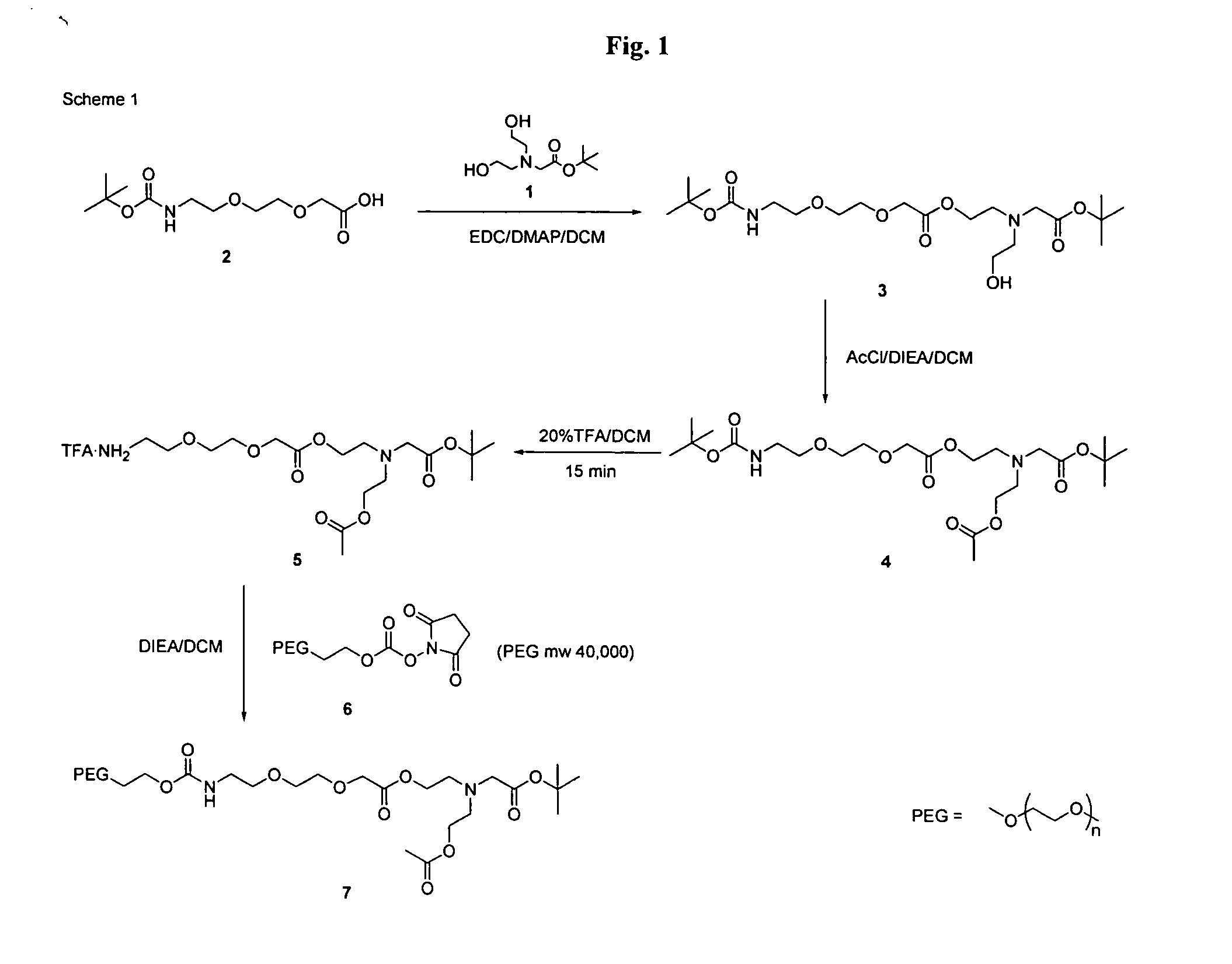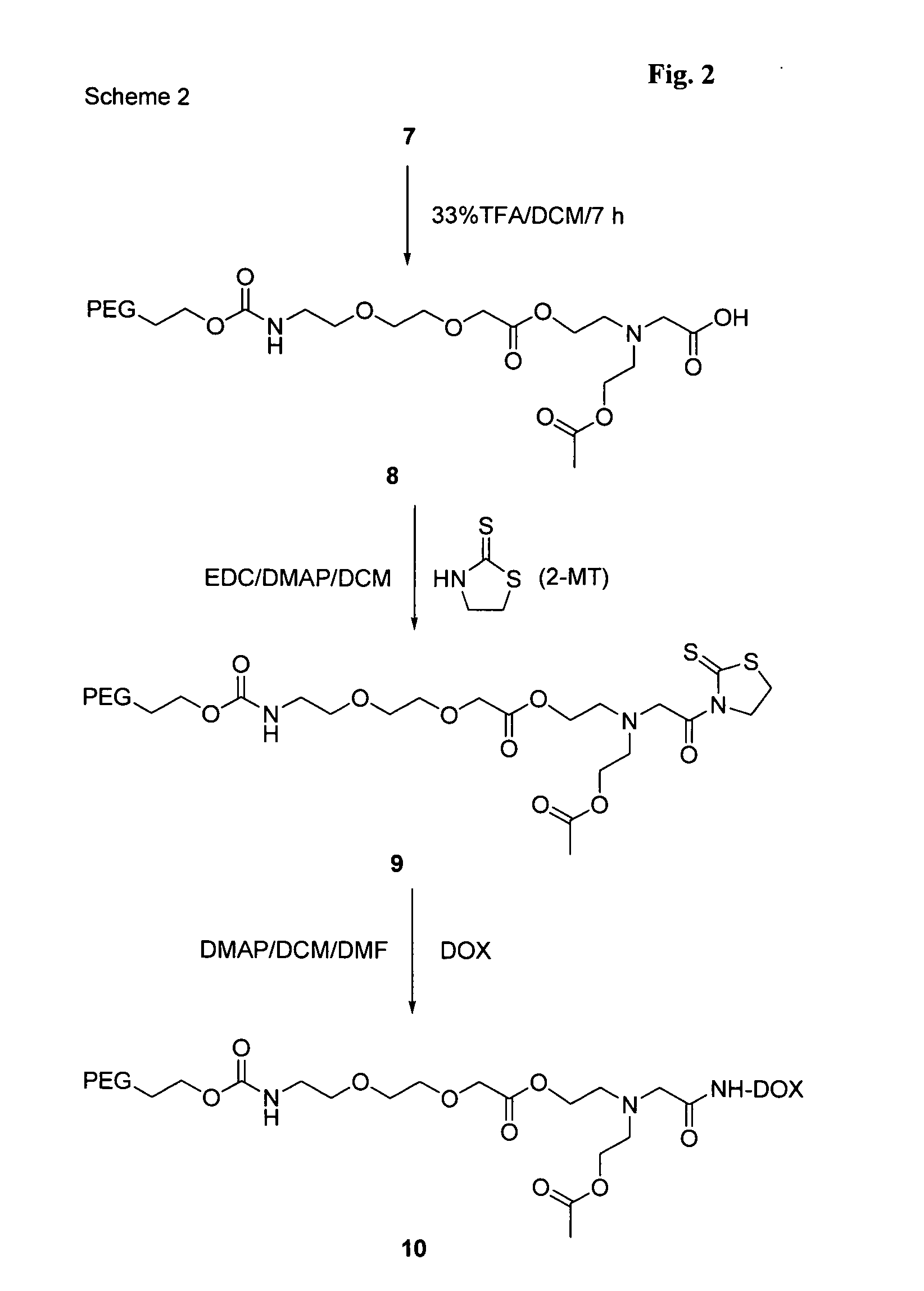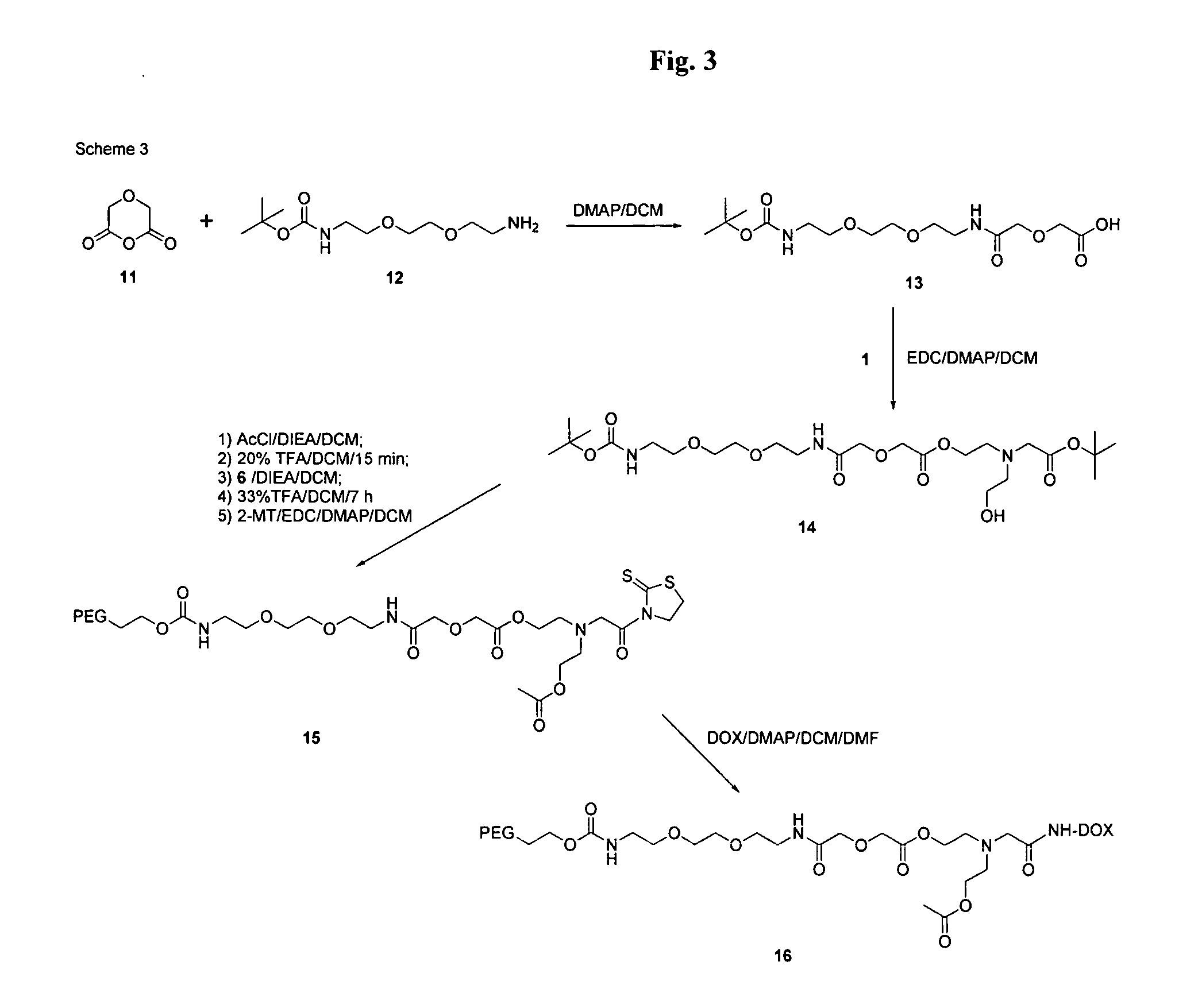Releasable polymeric conjugates based on biodegradable linkers
a biodegradable, polymer technology, applied in the direction of ester active ingredients, peptides, drug compositions, etc., can solve the problems of loss of activity, difficult preparation, high cost of use, etc., to achieve improved metabolic profile, easy purification, and cleaner and faster conjugation process
- Summary
- Abstract
- Description
- Claims
- Application Information
AI Technical Summary
Benefits of technology
Problems solved by technology
Method used
Image
Examples
example 1
Synthesis of Compound 3
[0200] A solution of 2 (2.3 g, 8.7 mmol), 1 (1.9 g, 8.8 mmol), and DMAP (1.6 g, 12.9 mmol) in 30 ml of dry methylene chloride was cooled to 0° C. in an ice bath, followed by addition of EDC hydrochloride (2.3 g, 12.0 mmol). This mixture was allowed to warm to room temperature overnight, followed by washing with 0.1 N HCl. The organic layer was dried over anhydrous sodium sulfate, filtered, and the solvent removed from the filtrate by rotovap to yield 3 (3.6 g, 7.8 mmol, 90%). 13C NMR (75.4 MHz, CDCl3) δ 170.04, 169.86, 155.54, 80.87, 78.66, 70.49, 69.95, 68.14, 62.71, 55.85, 52.59, 40.02, 28.15, 27.91.
example 2
Synthesis of Compound 4
[0201] To a solution of 3 (1.8 g, 3.9 mmol) in 35 ml of dry methylene chloride was added acetyl chloride (0.49 g, 6.2 mmol), followed by diisopropylethyl amine (1.82 g, 14 mmol). This mixture was stirred for 10 minutes at room temperature, at which time no starting material was detected by TLC. This mixture was washed with saturated sodium bicarbonate and dried over anhydrous sodium sulfate, filtered, and the solvent removed from the filtrate by rotovap to yield 1.6 g of crude product. This material was purified by column chromatography on silica gel and eluted with 2.5% acetonitrile in ethyl acetate to yield 4 (0.69 g, 1.4 mmol, 35%). 13C NMR (75.4 MHz, CDCl3) δ 170.60, 170.27, 170.02, 155.68, 80.99, 78.88, 70.68, 70.13, 70.10, 68.34, 62.93, 62.74, 56.11, 52.81, 52.76, 40.21, 28.29, 28.08, 20.88.
example 3
Synthesis of Compound 7
[0202] A solution of 4 (0.25 g, 0.50 mmol) in 20 ml of methylene chloride and 5 ml of TFA, was stirred for 15 minutes at room temperature, followed by removal of the solvents by rotovap to yield 5. Compound 5 was combined with 10 ml of dry methylene chloride, followed by addition of DIEA until the pH was above 8.0 (0.2 g). This bicine solution was added to a solution of 6 (˜5.0 g, 0.12 mmol) in 40 ml of dry methylene chloride, and stirred overnight at room temperature. At this time, the solvent was partially removed by rotovap, the product precipitated with ether, and collected and washed with ether. This crude product was recrystallized from 12% DMF / IPA to yield 7 (4.6 g, 0.11 mmol, 90%).
[0203]13C NMR (75.4 MHz, CDCl3) δ 170.31, 170.03, 169.76, 155.91, 80.74, 70.64-70.19 (PEG), 69.78, 69.72, 69.23, 68.13, 63.52, 62.73, 62.53, 55.92, 52.64, 40.46, 27.91, 20.69.
PUM
| Property | Measurement | Unit |
|---|---|---|
| pH | aaaaa | aaaaa |
| weight average molecular weight | aaaaa | aaaaa |
| molecular weight | aaaaa | aaaaa |
Abstract
Description
Claims
Application Information
 Login to View More
Login to View More - R&D
- Intellectual Property
- Life Sciences
- Materials
- Tech Scout
- Unparalleled Data Quality
- Higher Quality Content
- 60% Fewer Hallucinations
Browse by: Latest US Patents, China's latest patents, Technical Efficacy Thesaurus, Application Domain, Technology Topic, Popular Technical Reports.
© 2025 PatSnap. All rights reserved.Legal|Privacy policy|Modern Slavery Act Transparency Statement|Sitemap|About US| Contact US: help@patsnap.com



